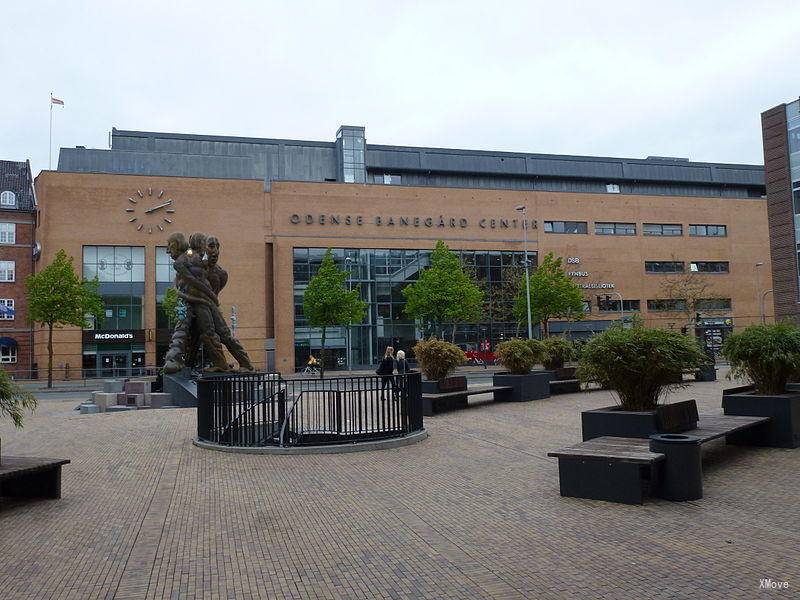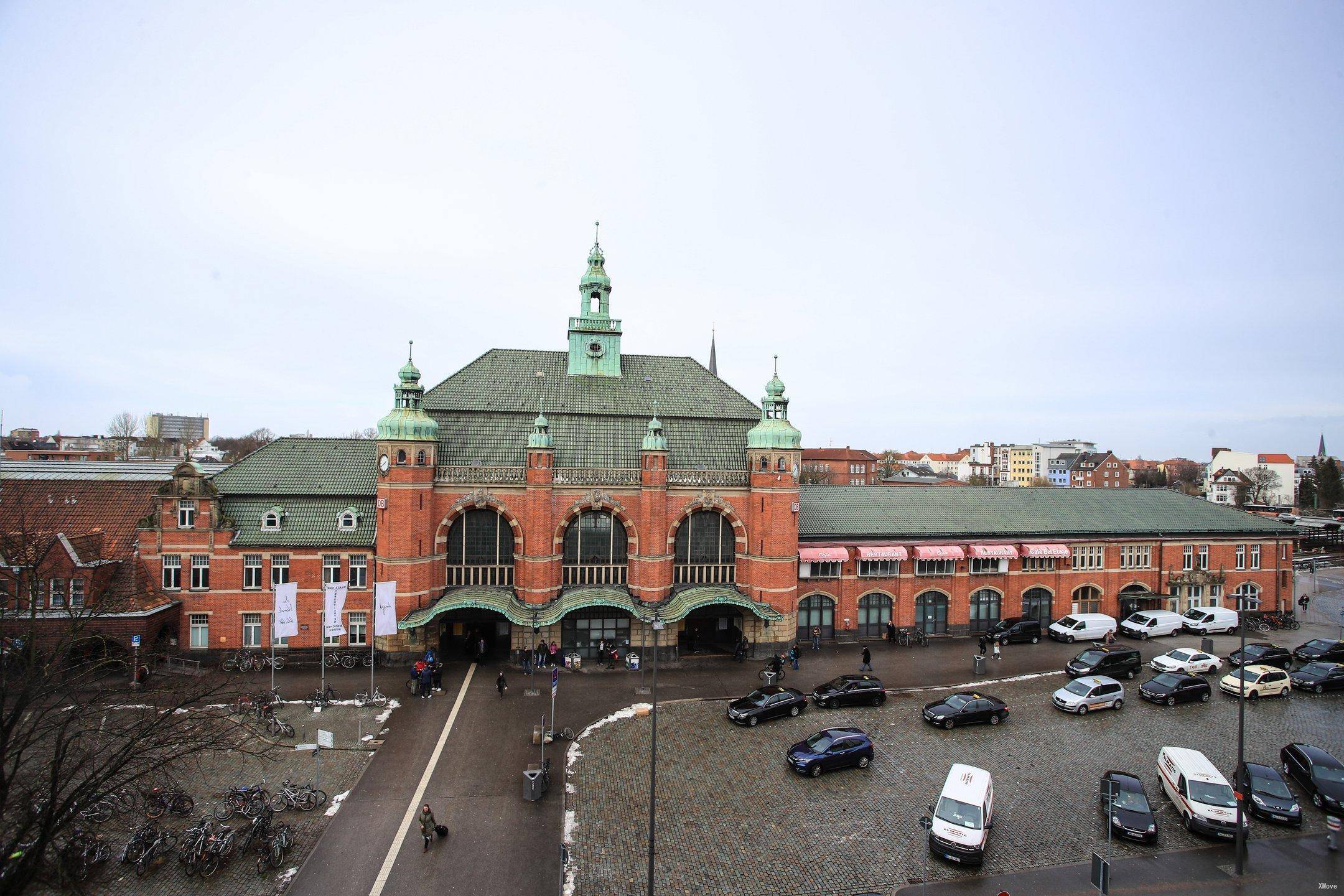Odense St to Luebeck Hbf: Trains, Buses, Fares, Today's Connections, Routes, Duration, Types of Trains, Station Guides, Tips, Journey
Denmark Train Tickets
Scan QR code, download G2Rail App to see Odense St's more live update, station guide, plan and photos



Train schedule Odense St to Luebeck Hbf(Lübeck Hbf)
Popular train routes departing from Odense St
* Husum(S) Station(Husum Station)
* Venlo
* Duesseldorf Flughafen(Düsseldorf Flughafen)
* Kiel Central(Kiel Hbf)
* Prague Central(Praha Hlavní Nádraží (Prag Hl. N.))
* Essen Central(Essen Hbf)
* Emden Hbf
Popular train routes arriving in Odense St
* Центральный вокзал Амстердама(Amsterdam Centraal)
* Любек(Lübeck Hbf)
* Познань(Poznan Gl.)
* Катовице(Katowice)
* Карлсруэ(Karlsruhe Hbf)
* Амерсфорт(Amersfoort)
* Орхус(Aarhus)
* Бремерхафен(Bremerhaven Hbf)
* Свеннборге(Svendborg St)
* Вупперталь(Wuppertal Hbf)
* базель Sbb(Basel Sbb)
* Копенгаген(København)
* Дортмунд(Dortmund Hbf)
* железнодорожный вокзал дальнего следования в аэропорту франкфурта Fernbf(Frankfurt(M) Flughafen Fernbf)
Popular train routes departing from Luebeck Hbf(Lübeck Hbf)
* Kiel Central(Kiel Hbf)
* Frankfurt(M) Airport(Frankfurt(M)Flughafen)
* Stralsund Central(Stralsund Hbf)
* Frankfurt Central(Frankfurt(Main)Hbf)
* Bad Bramstedt Kurhaus
* Bergen Auf Ruegen(Bergen Auf Rügen)
* Longwy
Popular train routes arriving in Luebeck Hbf(Lübeck Hbf)
* Bergen Su Rügen(Bergen Auf Rügen)
* Scharbeutz
* Stazione Centrale Di Dusseldorf(Düsseldorf Hbf)
* Porto Di Lubecca Travemünde(Lübeck Travemünde Hafen)
* Nykøbing Falster
* Stazione Parigi Est(Paris Gare De L’est)
* Putt (Ms)(Puttgarden(Ms))
* Wismar
* Praha Hlavní Nádraží (Prag Hl. N.)
* Flensburg
* Aeroporto Di Hannover(Hannover Flughafen)
* Utrecht Centrale(Utrecht Centraal)
* Karlovy Vary
* Stazione Centrale Di Amsterdam(Amsterdam Centraal)
* Kolding St
* Stazione Centrale Di Darmstadt(Darmstadt Hbf)
* Stazione Centrale Di Francoforte(Frankfurt(Main)Hbf)
* Stazione Centrale Di Copenaghen Hovedbanegard(Köbenhavn H)
* Aeroporto Di Hannover(Hannover Flughafen)
* Stazione Centrale Di Berlino (Profonda)(Berlin Hbf (Tief))
* Padborg St

Odense (, also US: , Danish: [ˈoðˀn̩sə] ) is the third-largest city in Denmark. It has a population of 178,210 as of January 2016, and is the main city of the island of Funen. By road, Odense is located 45 kilometres (28 mi) north of Svendborg, 144 kilometres (89 mi) to the south of Aarhus and 167 kilometres (104 mi) to the southwest of Copenhagen. The city is the seat of Odense Municipality and was the seat of Odense County until 1970, and Funen County from 1970 until 1 January 2007, when Funen County became part of the Region of Southern Denmark. Odense has close associations with Hans Christian Andersen who is remembered above all for his fairy tales. He was born in the city in 1805 and spent his childhood years there. There has been human settlement in the Odense area for over 4,000 years, although the name was not mentioned in writing until 988, and by 1070, it had already grown into a thriving city. Canute IV of Denmark, generally considered to be the last Viking king, was murdered by unruly peasants in Odense's St Alban's Priory on 10 July 1086. Although the city was burned in 1249 following a royal rivalry, it quickly recovered and flourished as a centre of commerce in the Middle Ages. After a period of decline, large-scale plans for development were made during the 18th century, which led to the rebuilding of Odense Palace and the building of a canal to the Port of Odense, facilitating trade. In 1865, one of the largest railway terminals in Denmark was built, further increasing the population and commerce, and by 1900, Odense had reached a population of 35,000. Odense's Odinstårnet was one of the tallest towers in Europe when built in 1935 but was destroyed by the Nazis during World War II. The University of Southern Denmark was established in 1966. In the present day, Odense remains the commercial hub of Funen, and has a notable shopping district with a diversity of stores. Several major industries are located in the city including the Albani Brewery and GASA, Denmark's major dealer in vegetables, fruits and flowers. The city is home to Odense Palace, erected by King Frederik IV who died there in 1730, the Odense Theatre, the Odense Symphony Orchestra, and the Hans Christian Andersen Museum, situated in the house that was the birthplace of Hans Christian Andersen. In sports, Odense has a number of football clubs including OB, BM, B1909, and B1913, the Odense Bulldogs professional ice hockey team, and the city also hosts the H.C. Andersen Marathon. Odense is served by Hans Christian Andersen Airport and Odense station, which lies on the line between Copenhagen and the Jutland peninsula.
Odense - Guide, Attractions, Tours, Sightseeings | Train from/to Odense | Popular RoutesLübeck ( LOO-bek, German: [ˈlyːbɛk] ), officially the Hanseatic City of Lübeck (German: Hansestadt Lübeck), is a city in Schleswig-Holstein, northern Germany, and one of the major ports of Germany. On the river Trave, it was the leading city of the Hanseatic League, and because of its extensive Brick Gothic architecture, it is listed by UNESCO as a World Heritage Site. In 2015, it had a population of 218,523. The old part of Lübeck is on an island enclosed by the Trave. The Elbe–Lübeck Canal connects the Trave with the Elbe River. Another important river near the town centre is the Wakenitz. Autobahn 1 connects Lübeck with Hamburg and Denmark. Travemünde is a sea resort and ferry port on the coast of the Baltic Sea. Lübeck Hauptbahnhof links Lübeck to a number of railway lines, notably the line to Hamburg.
Lubeck - Guide, Attractions, Tours, Sightseeings | Train from/to Lubeck | Popular Routes
Denmark Train Tickets
Scan QR code, download G2Rail App to see Odense St's more live update, station guide, plan and photos



Hot Journeys
* Rome(Roma) -> Venice(Venezia)
* Naples -> Florence
* Kyoto(京都) -> Tokyo(東京)
* Barcelona -> Valencia
* Bratislava(Bratislava) -> Warsaw(Warszawa)
* Venice(Venezia) -> Florence
* Lucerne(Luzern) -> Arth
* Venice(Venezia) -> Bologna
* Florence -> Rome(Roma)
* Florence -> Prato(Prato)
* Munich(Müchen) -> Frankfurt
* Avignon -> Paris
* Dusseldorf(Düsseldorf) -> Munich(Müchen)
* Florence -> Milan
* Budapest(Budapest) -> Vienna(Wien)
* Kaohsiung(高雄) -> Taipei(台北)
* Frankfurt Airport(Frankfurt Flughafen) -> Cologne(Köln)
* Madrid(Madrid) -> Barcelona


